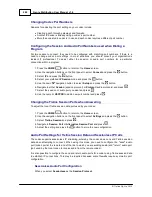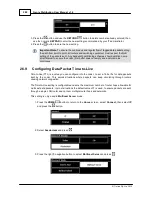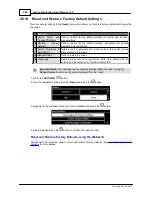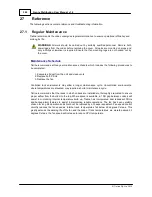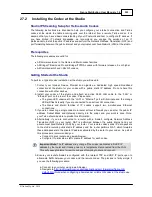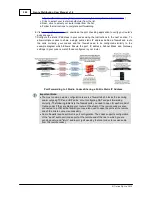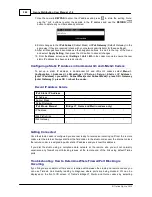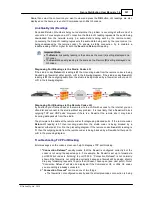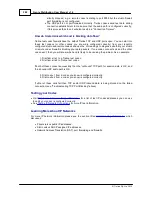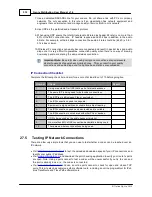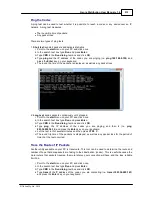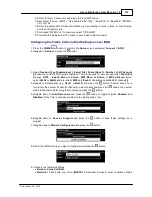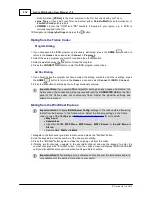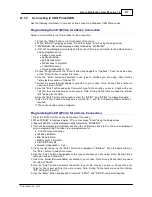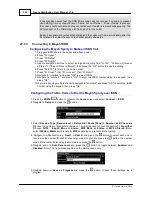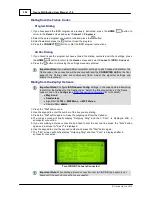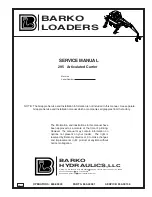
310
Genie Distribution User Manual v1.6
© Tieline Pty. Ltd. 2015
Private IP Addresses are associated with LANs and normally reside behind a firewall and are not
visible to the internet. They are generally in the ranges: 10.0.0.1 – 10.255.255.255, 169.254.0.0 –
169.254.255.255, 172.16.0.0 – 172.31.255.255 and 192.168.0.0 – 192.168.255.255 and are
assigned by network DHCP servers and routers.
These IP Addresses are generally assigned for a predefined period (known as a lease) by your
network's DHCP server or router. This IP address will generally expire after the lease period. DHCP
assigned IP Addresses may also change if the device is disconnected for lengthy periods or if power
to the device is turned off and back on. As a result, it is advised that you make this IP address
permanent by assigning it as a Static DHCP IP Address. This will ensure you are able to always
forward incoming audio packets to your codec using the same private IP address at the studio using
port forwarding (see the section on port forwarding for more details). Consult your Network
Administrator if you are unsure how to do this.
Network Address Translation (NAT)
Network Address Translation (NAT) is a method of connecting multiple devices to the internet using
one public IP address.
The best way to explain NAT is to use the example of a phone system at an office that has one
public telephone number and multiple extensions. This type of telephone system allows people to
call you on a single public telephone number and performs the translation and routing of the public
number to a particular private extension. Similarly, in order to receive an IP call from a remote codec
over the public internet, the same network address translation principle applies. NAT and port
forwarding allows a single device, such as a broadband router, to act as an agent between the public
internet and a local private LAN.
The relationship between public and private IP addresses and NAT is displayed in the following
diagram and the following section explains port forwarding configuration in more detail.
Port Forwarding: Tieline TCP and UDP Port Settings
For your Tieline Codec to communicate over the public internet an IP Address alone is not sufficient.
In TCP/IP and UDP networks the codec port is the endpoint of your connection. Ports are doorways
for IP devices to communicate with each other. Picture a house and imagine the front door is the
entry point represented by a public or private IP address. Then you want to get to several codecs in
different rooms of the same house and ports represent the doors to each of those rooms. In principle
this is how port addressing works.
For example, several codecs may dial into your studio using the same public static IP address. In
this situation it is necessary to configure codec 'programs' with audio streams using different audio
ports for discretely routing each incoming and outgoing audio stream. By doing this your studio's
network routers know where IP packets for each audio stream should be routed, i.e. to which codec
and respective audio outputs.
When data packets are received from remote codecs at a particular public IP address, port
information is translated from data packets to ensure the correct packets are sent to the correct
studio codecs. This process is performed by PAT (Port Address Translation), which is a feature of
NAT (Network Address Translation) devices.
Tieline codecs use TCP ports for setting up the communication session and UDP ports for
streaming audio. While TCP ports are generally open, UDP ports are generally blocked by network
devices which contain firewalls and will stop you delivering your audio. Depending on the codecs you
are using, you need to configure your firewall to allow TCP and UDP protocols to pass through the
ports listed in the table below.

